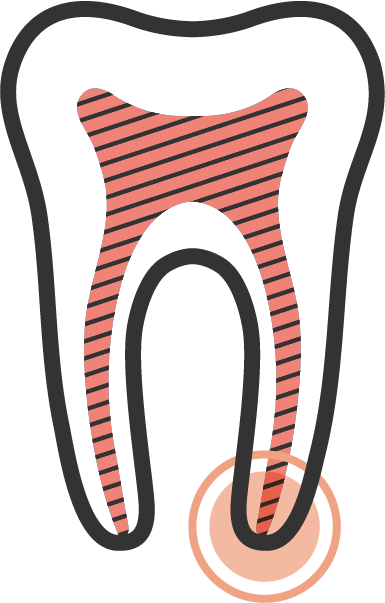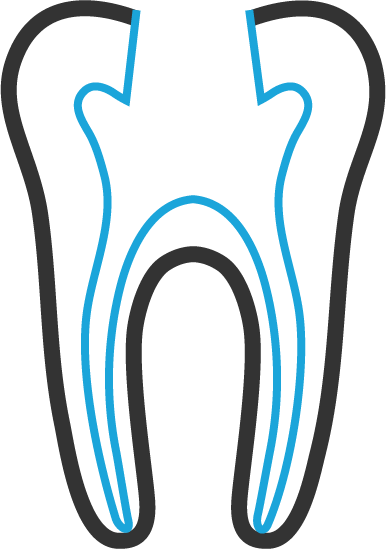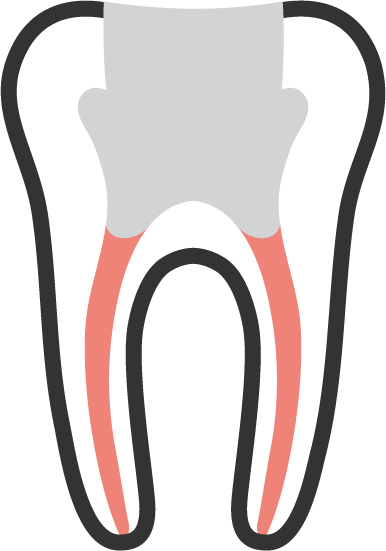Root Canal Retreatment
Retreatment involves reopening a tooth that has not healed after a previous root canal treatment. The doctor will remove the previous root canal filling, re-clean the canals, examine the inside of your tooth to search for additional canals or unusual anatomy, and reseal the root canals. Improper healing may be caused by:
- curved or narrow canals that were difficult to negotiate during the initial treatment.
- complicated or unusual canal anatomy that was not detected in the initial treatment.
- the crown or permanent restoration not being placed within the appropriate amount of time following treatment, causing leakage.
- fractured teeth or roots.
- new infection caused by decay, periodontal disease, or a loose/broken restoration.

Infection or inflammation, after previous root canal treatment, that may lead to an abscess.

Previous root canal filling is removed, canals are shaped.

Root canals are resealed. Opening is sealed with temporary filling.
Signs and Symptoms
If you continue to experience pain in a tooth that has received a root canal, you may need root canal retreatment. This pain may even begin months or years after the initial treatment.
Pre-Op Instructions
You should not take pain medication 4-6 hours before your scheduled appointment to avoid masking any symptoms when we test the area. We will discuss your proposed procedure in detail with you once the initial exam is done so you know exactly what to expect.
Post-Op Instructions
Return to your general dentist as soon as possible for a permanent restoration to prevent fracture and/or further complications.
References
Are you interested in learning more details about your root canal retreatment? These references from the American Association of Endodontics (AAE) are a great starting point.
AAE: Endodontic Retreatment Explained
AAE: Endodontic Retreatment: Educational Video